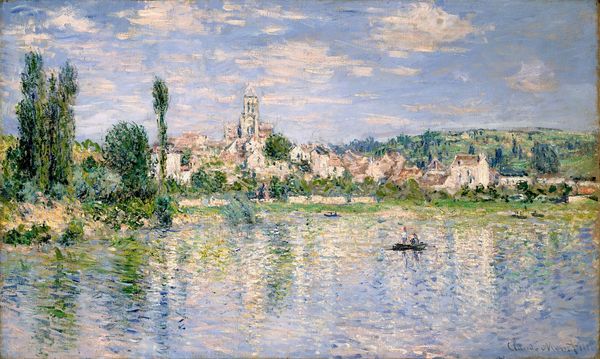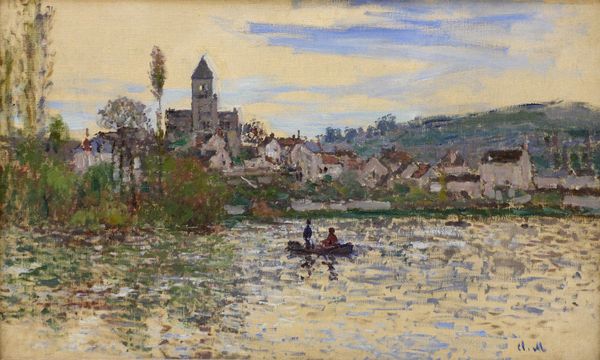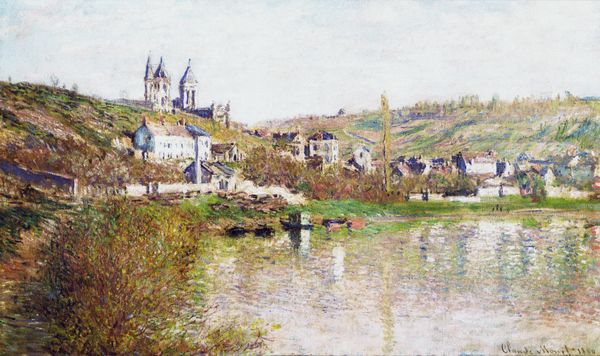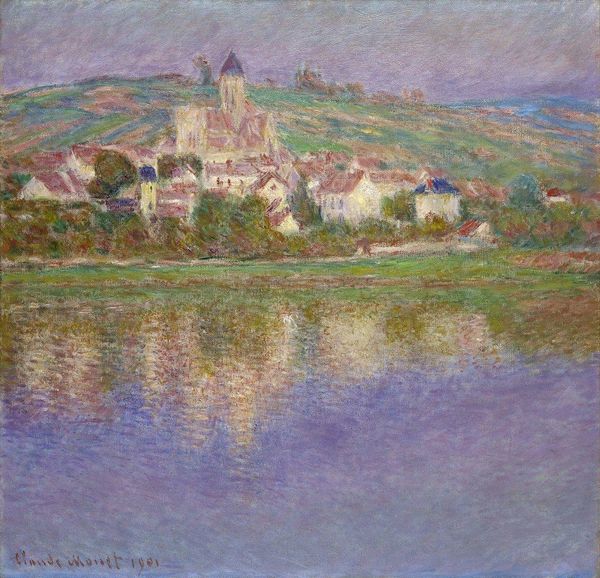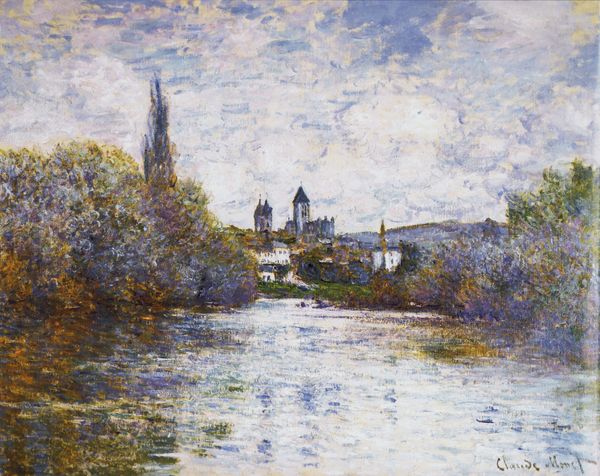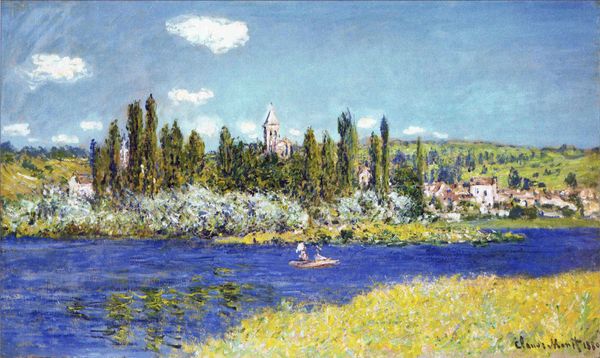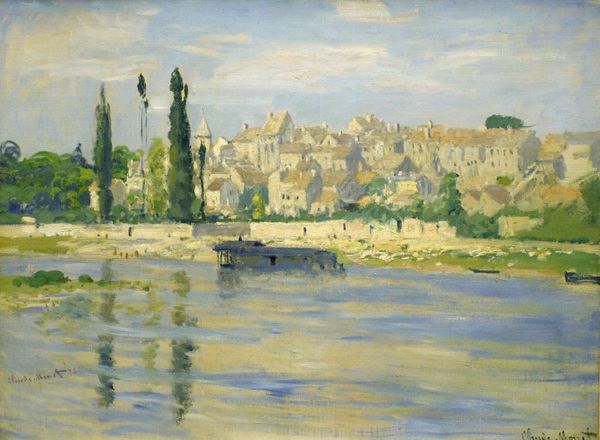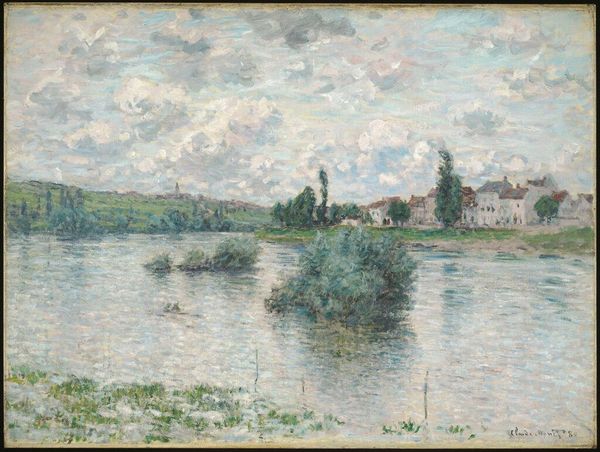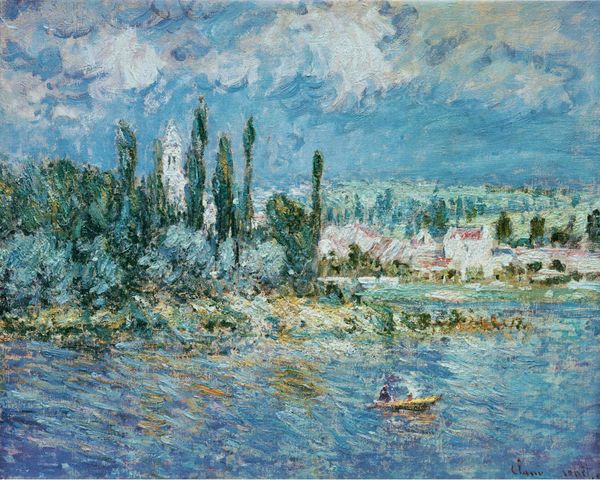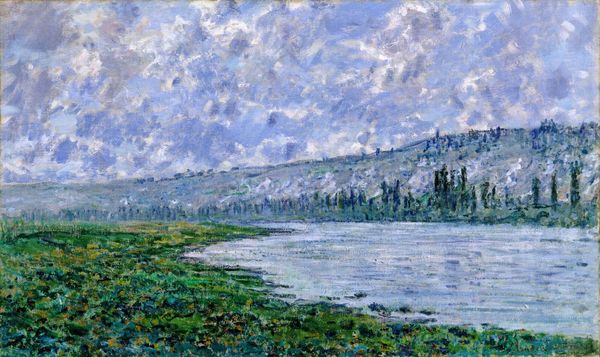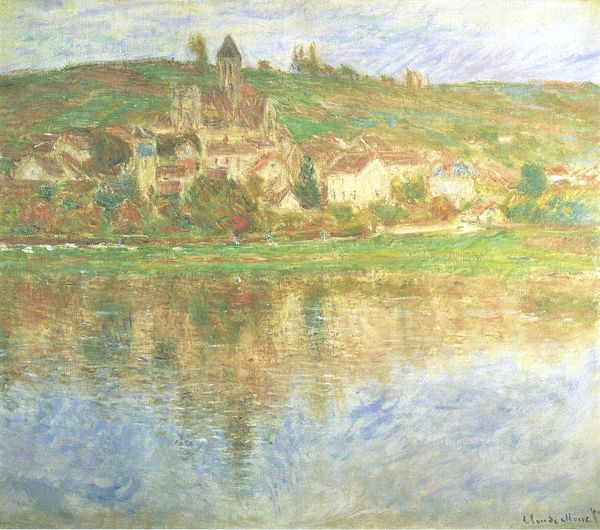
#
abstract expressionism
#
abstract painting
#
rural-area
#
impressionist landscape
#
possibly oil pastel
#
oil painting
#
fluid art
#
acrylic on canvas
#
seascape
#
paint stroke
#
watercolor
Copyright: Public domain
Curator: Before us, we have Claude Monet's "Vetheuil," painted in 1879. Monet, of course, worked primarily with oil on canvas, as seen here. Editor: It has this incredibly hazy, sun-drenched quality to it. I’m immediately drawn to the shimmering water—it's almost abstract. The whole piece feels very... tactile. Curator: Indeed. And during this period, Monet was dealing with personal struggles. His wife was ill, eventually passing the same year as this work, which perhaps lends insight into the haziness of this view. This human aspect of both loss and resilience shapes how we understand the work today. Editor: Absolutely. And to think about the materiality: the texture of the paint itself, laid down in visible strokes, speaks to the act of making. The river, the source of life and movement, takes up at least half of the picture plane. I think Monet, at this point, may have even mixed his own paints with a refined process based on pigment and even regional soils available in Vetheuil at the time. It also speaks to the social and economic role that the river might have had in the village's everyday existence. Curator: Precisely. Furthermore, you cannot dismiss the patriarchal system of art production from that time. We must acknowledge that as a female artist at that moment, for example, it would have been significantly difficult, even impossible, to be considered. I wonder what stories could be revealed if paintings of this quality could have come to life during those years. Editor: That's a powerful point. But considering Monet himself, the social context shaped his labor, too, and allowed him access to those resources—those raw materials. Curator: It is certainly true. Looking back, we're aware that his privileged position in the art world afforded him the ability to pursue the fleeting moments, the ephemerality of light. Editor: But I keep returning to the water; I suppose he also understood it from a materials standpoint too. As his work, a literal and socio economic current? Perhaps his labor and supplies reflect the cultural conditions that frame it. Curator: His approach challenges us to re-evaluate the value systems that persist in our own era. This dialogue, even a century later, highlights the complexities embedded in appreciating art history while also acknowledging the societal forces at play in our evaluation of it today. Editor: Exactly. By understanding how materials were accessed, combined, and manipulated, we begin to unravel both the possibilities and limitations inherent in Monet's world.
Comments
No comments
Be the first to comment and join the conversation on the ultimate creative platform.
